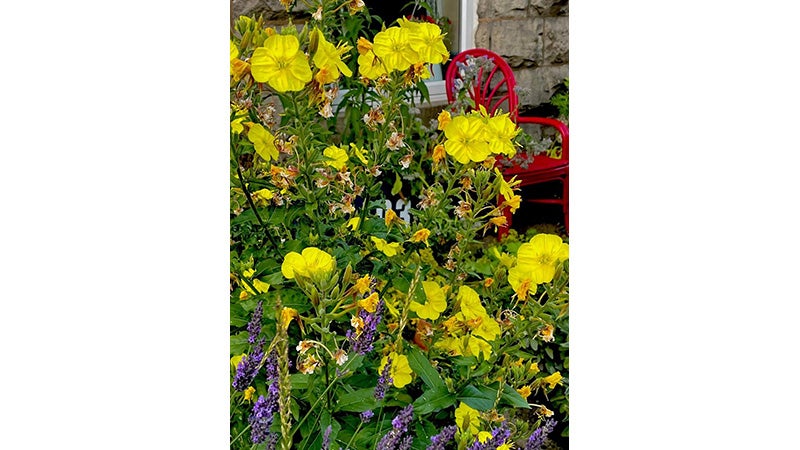Why do some plants flower at night?
Published 11:00 am Sunday, August 1, 2021
|
Getting your Trinity Audio player ready...
|
Watching my native evening primrose unfurl at dusk should have been soothing to my romantic right brain. But the interwoven dance of flowers, fragrance, and a large, hovering sphinx moth kicked my scientific left brain into overdrive.
After acing college plant physiology courses, I thought I was done with krebs cycle, phytochromes, amyloplasts, and all that. But nope, as a “person of curiosity,” little garden events prompt questions. The latest for me is “What makes some plants flower at night?”
You probably grow a few; just a handful of mine includes evening primrose, moonflower vine, four o’clocks, angel trumpets, and night-blooming cereus (Epiphyllum).
Trending
Digging back into my class notes showed me how much in just my own lifetime we’ve learned about the chemistry and mechanics of how plants keep track of time, how they “know” when to flower (technically, they measure the hours of darkness, not the hours of daylight). And how they tell seasons apart.
But we still don’t know for sure why some flower only at night. Best theories surmise that light-colored flowers open in darkness to welcome shy pollinators trying to avoid predators, and maybe to help plants growing in arid climates conserve moisture and energy.
Slowly, over millennia, it dawned on some plants that holding their beauty, perfumes, and pollen until dark brings out the best suitors!
Anyway, while jonesing for explanations, I pored over scientific reports, trying to wrap my frazzled old head around technical concepts; here are some (scroll down if reading science makes your eyes bleed):
First off, plants respond to direct stimuli, like towards light (phototropism), gravity (geotropism), or to wrap around supports (thigmotropism). They also respond to non-directional factors like temperature, humidity, and daylength.
Without getting into photosynthesis and how plants use solar energy to create sugars, and through respiration they convert those sugars into carbohydrates which they need to grow. Or how respiration happens even after dark, enabling plants to keep growing when they aren’t are busy with the daytime stuff. Suffice to say it’s a lot like how our own bodies are most active during the day, then repair and rebuild as we sleep.
Trending
Anyway, plants don’t sleep like we do, but they do have light sensors that trigger biological switches, turning night/day responses on and off. Full sun exposes plants to lots of visible red light, which switches plants into active growth mode; shaded or late afternoon sun has more far-red wavelengths, which put them into night mode.
Some plant chemicals break down slowly overnight, letting plants keep track of how many hours they spend on and off, which affects flowering; plus, as nights get successively shorter or longer, plants “predict” what seasons are approaching. Horticulturists take advantage of this by using extra lighting or shading to trick poinsettias, Easter lilies, chrysanthemums, and other flowers to bloom out of season.
In general, stimuli such as sunlight, air temperatures, and even humidity can pressurize fluids to move into or out of “hinges” at the base of leaves and flowers, or cause cells to get bigger or smaller, longer or shorter. This is what makes leaves of some plants to fold and unfold, flowers open and close, and stems to bend towards light.
Still don’t know why. But while I’m at this, in case you wondered, amyloplasts, which I mentioned at the beginning of this treatise, are tiny granules in cells dragged down by gravity to irritate cell walls so plants know which way is up and down.
Ain’t science grand? But I’ve got to relax now, try to get back to just soaking in the evening garden’s natural allures.
Felder Rushing is a Mississippi author, columnist, and host of the “Gestalt Gardener” on MPB Think Radio. Email gardening questions to rushingfelder@yahoo.com.







